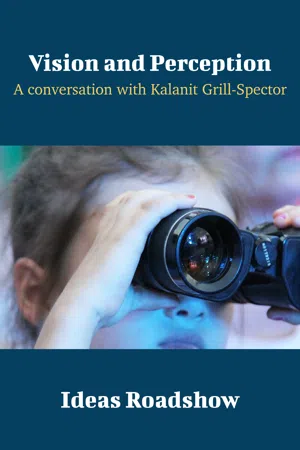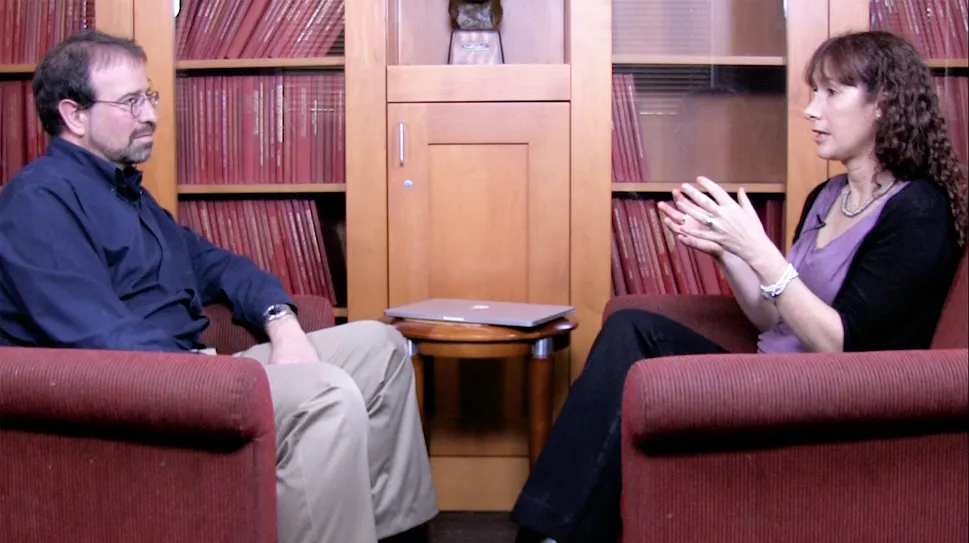![]()
The Conversation
![]()
I. Neuroimaging
A transformative technology
HB: Since you kindly gave me a tour of your fMRI facilities here at Stanford, let me just dive in and ask some questions about that. How does functional MRI differ from the normal MRI machine that most people are familiar with—for medical injuries and so forth—and how does it differ from PET scans which people also might have heard of?
KGS: fMRI has really been a revolution in cognitive neuroscience. It started in the early 90s. It’s the same machine that does the MRI for a knee scan, for example. The only thing is that, instead of measuring the tissue, we’re measuring changes in brain metabolism.
When you use your brain, to do some sensory processing for example, your brain uses oxygen, and changes in oxygenation levels affect the local magnetic field; this is what’s picked up by the scanner. The patient is placed inside the scanner, his or her head is placed in a coil, and this coil picks up signals in the brain that are linked to neural activation in the regions that are activated by whatever task the person is doing.
HB: When I first heard about fMRI I was confused about that because I thought, Oh, they’re measuring the brain, so they must be measuring the electrical signals. Of course what they’re doing is measuring, just as you said, the oxygen related to the blood supply that’s flowing into specific brain areas because of neural activity.
KGS: Yes. We’re not measuring direct neural activity. We’re measuring a BOLD signal, a blood-oxygen-level-dependent signal. In fact, you might think there would be less oxygen because you’ve used it for the metabolism, but the brain overcompensates so you get an overflow of oxygenated haemoglobin. Really what we are picking up with a scanner is the amount of deoxygenated haemoglobin, and that actually gets washed off; this is why the signal goes up. So it’s an indirect measure of brain activity.
The reason that it’s different from PET—positron emission tomography—is that it’s non-invasive. For PET you need to inject subjects with a radioactive material. That’s an invasive procedure. With fMRI you don’t inject anything. This has really been the power of fMRI technology because you can study the same person and run the experiments over and over again, or over time, or over development, or over the lifespan. This has been a really big breakthrough because you can peer into people’s brains without doing anything to them invasively.
HB: And this was developed in the early 90s?
KGS: The first fMRI papers were published in Proceedings of the National Academy of Science of the USA in 1992. There were two groups that did this in parallel. One was a group at Bell Labs led by Seiji Ogawa. The other group was at Massachusetts General Hospital and the first author on that paper was Ken Kwong. Basically they conducted the first experiments where they showed people pictures versus no pictures—they had flashing checkerboards—and they could see an increase in the back of the brain where the visual cortex is located when people saw stuff versus when they didn’t.
HB: So in your own studies, subjects go into this machine and you have them focused on doing particular tasks and thinking about particular things, or seeing particular things. How long do they stay in there for, in general?
KGS: They usually stay between an hour and two. Usually what we’ll do is put the subject in the scanner and first run a brain anatomy scan. The reason we want to see their brain anatomy is because we are interested in which part of their brain is involved in what function. This allows us to create—I’ll show you later—these beautiful cortical reconstructions in which we can see the brain from all three dimensions, because the way we acquire information in the scanner is in slices, like in a CT scan, so we can get the 3D reconstruction. That takes about five to ten minutes. That’s called just MRI, anatomical MRI.
HB: Let me just stop you there for a moment. Does this mean that people’s brain anatomy differs significantly? I would have thought that this would be relatively constant. But it’s not?
KGS: There are two things to consider here. The first is that, as a field, we are interested in how brain anatomy does change. I, for example, am looking at how it might change from childhood to adulthood. There are some things that will happen as a result of certain diseases, like Alzheimer’s disease for example, where there are actually changes to the brain anatomy because of the disease.
The second point is that we want to look really closely at how function is implemented in each person’s brain. So your brain and my brain have the same general pattern of what we call cortical folding—there are hills and valleys—but there are idiosyncrasies for each brain and we really want to understand the relationship between function and anatomy in each person’s brain. So we want to take a detailed picture of every subject’s brain.
HB: So there is really significant variation between different people? That’s fascinating. I never would have thought that.
KGS: On one hand there is variety; on the other hand there is stability. One of the things we’re trying to figure out is what is stable and what is variable across people. There is more variety than, for example, the hand; there are always five fingers on your hand. There is a little bit more variety in the number of cortical folds, but the big ones are very stable across people.
HB: Right—but I had interrupted you. You were telling me that these anatomical scans were the first things that you do.
KGS: That’s the first thing we do and that takes between five to ten minutes. Sometimes we do another kind of scan called diffusion tensor imaging or diffusion weighted imaging. That lets us measure how water diffuses in the brain. We do this to look at the wiring of the brain—which part of the brain is connected to another part of the brain. There are these really big white matter bundles; they’re called fascicles. Because they are myelinated, they are very directional, so the water doesn’t diffuse in all directions.
HB: Hold on a sec. Where is the water in my brain?
KGS: Your brain is all water.
HB: That’s not just my brain presumably?
KGS: Actually, all we are measuring in fMRI is how the magnetic field affects the water molecules. We’re measuring hydrogen atoms basically. Because the water doesn’t propagate freely, most of the direction of diffusion will be parallel to the fascicle, and we can measure the connectivity, the white matter connection, between one part of the brain and another part of the brain. This is another ty...

